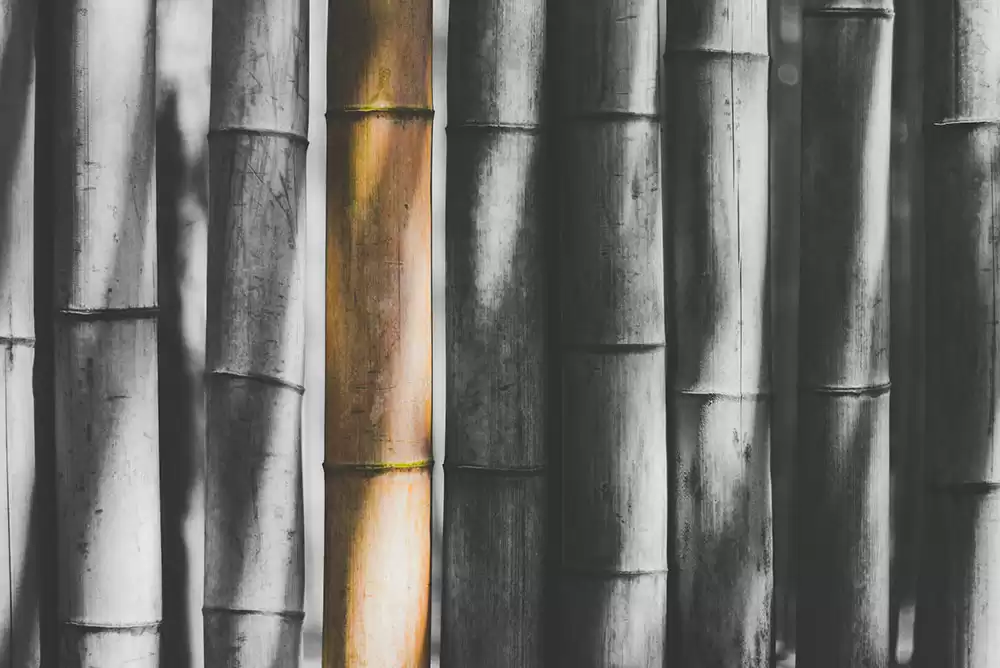
01 Apr The Dimensions of a Bamboo Shakuhachi Flute
Welcome to Chikushin Shakuhachi, where tradition meets craftsmanship with bamboo shakuhachi flutes. Continue reading to discover bamboo flute dimensions, measuring techniques, the historical significance of this instrument, and its cultural symbolism.
Introduction to the Shakuhachi Flute
The shakuhachi dates back centuries and holds a special place in Japanese culture. Originally introduced from China, it evolved into a quintessential Japanese instrument associated with Zen Buddhism and meditation.
Historical Significance of the Shakuhachi in Japanese Culture
Throughout history, the shakuhachi was used by Zen Buddhist monks, who used it during their spiritual practice. Over time, it became integrated into various musical genres, including classical, folk, and contemporary music, enriching Japan’s cultural tapestry.
Materials Used in Crafting a Bamboo Shakuhachi
Craftsmanship begins by carefully selecting and preparing bamboo culms, ensuring each piece meets our stringent standards. At Chikushin Shakuhachi, we meticulously choose high-quality madake bamboo harvested in Japan. This superior bamboo is known for its resilience and tonal qualities, serving as the foundation for our instruments.
Traditional Measuring Formulas and Tools Employed in Shakuhachi Making
Crafting a bamboo shakuhachi flute requires precision and expertise, guided by traditional measuring formulas and specialized tools. Our artisans meticulously measure and carve each flute, adhering to centuries-old techniques passed down through generations.
The Role of Bamboo in Shakuhachi Craftsmanship
Bamboo’s natural properties play a crucial role in shaping the sound and character of the Shakuhachi. Its hollow structure allows for resonant tones, while its flexibility enables precise tuning and adjustments. Each flute is a testament to the symbiotic relationship between craftsmanship and natural materials.
Standard Measurements and Dimensions of a Bamboo Shakuhachi
Shakuhachi dimensions are 54 centimeters long, and its inner bore dimensions range from 18 to 25 millimeters. These standardized measurements ensure consistency and quality across our instruments, maintaining their integrity and playability.
Inner Bore Dimensions and Their Importance
The inner bore dimensions of a shakuhachi significantly influence its sound and playability. Our artisans meticulously shape and polish the bore, fine-tuning its dimensions to achieve optimal resonance and response. This attention to detail enhances the instrument’s tonal clarity and dynamic range.
The Significance of the Utaguchi Angle and Depth
The utaguchi, or shakuhachi mouthpiece, is carefully crafted to precise angles and depths. This critical component directly impacts the instrument’s playability and tonal characteristics. Our artisans skillfully shape the utaguchi to balance ease of play with tonal richness, ensuring a satisfying playing experience for musicians of all levels.
Variations in Tuning Pitch for Bamboo Shakuhachi
Bamboo shakuhachi flutes are tuned to a pitch between 440 and 442 hertz, aligning with standard tuning practices in Japanese music. However, variations in pitch may occur based on individual preferences and performance contexts. Our instruments are meticulously tuned and tested to meet the demands of discerning musicians like you.
Conclusion: Cultural Importance and Symbolism of the Shakuhachi Flute in Japan
In conclusion, the bamboo shakuhachi embodies Japan’s cultural heritage and artistic traditions. Its dimensions, materials, and craftsmanship reflect centuries of innovation and mastery, making it a cherished instrument among enthusiasts and performers worldwide.
At Chikushin Shakuhachi, we honor this legacy by following precise shakuhachi dimensions to deliver bamboo flutes with exceptional quality and resonance. Click here if you’re interested in ordering a shakuhachi flute.


